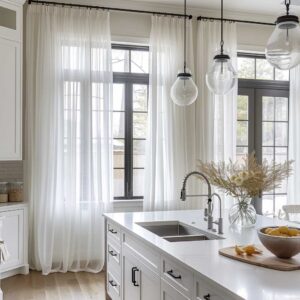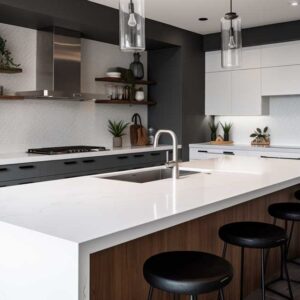Minimalism in kitchen design has become a popular trend, especially for those working with smaller spaces. With the right combination of simplicity and functionality, even the most compact kitchen can become efficient and beautiful. A streamlined, clutter-free environment can make cooking and dining more enjoyable, promoting both relaxation and creativity. This concept emphasizes “less is more,” focusing on essential elements that bring calmness and efficiency. Through intentional layouts, practical storage, and thoughtful aesthetics, it’s possible to transform a small cooking area into a refined space that serves all needs. Let’s explore different aspects and ideas that demonstrate how to embrace this design philosophy in compact kitchens.
How small simple kitchen design uses neutral colors to create serenity
Neutral colors are an essential element in designing small, simple kitchens, playing a significant role in creating a sense of serenity. By using light tones such as white, beige, and soft greys, these kitchens appear more spacious than they actually are. The reflective quality of lighter shades makes the room feel brighter and airier, which is essential in small spaces where natural light may be limited.
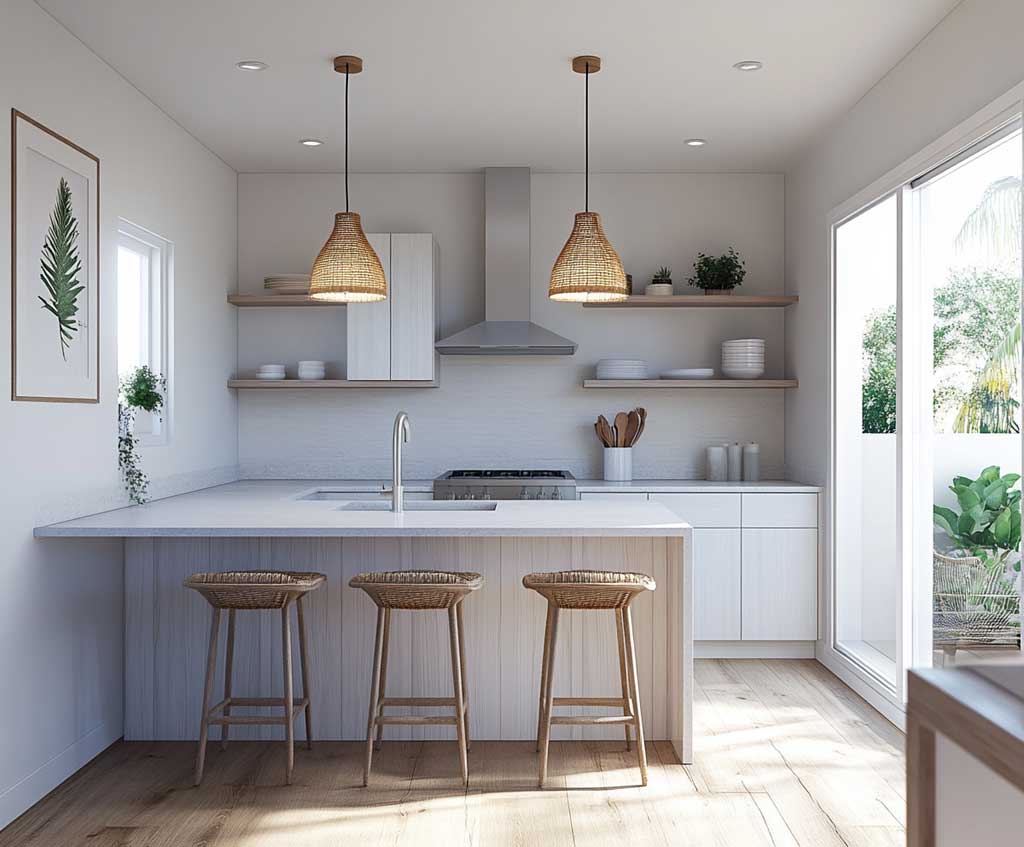
Miracle-Gro Organic Outdoor Potting Mix, for Outdoor Container Plants, Contains Quick-Release Natural Fertilizer, OMRI Listed, 16 qt.
$8.99 (as of 13.03.2025 00:05 GMT +04:00 - More infoProduct prices and availability are accurate as of the date/time indicated and are subject to change. Any price and availability information displayed on [relevant Amazon Site(s), as applicable] at the time of purchase will apply to the purchase of this product.)Welcome Bunny Easter Garden Flag 12x18 Inch Double-Sided, Easter Decorations for Outside, Small Burlap Happy March Garden Flag for Porch & Yard & House, Outdoor Spring Bunny Decor
$3.99 (as of 13.03.2025 00:05 GMT +04:00 - More infoProduct prices and availability are accurate as of the date/time indicated and are subject to change. Any price and availability information displayed on [relevant Amazon Site(s), as applicable] at the time of purchase will apply to the purchase of this product.)Bedsure Satin Pillowcases, Similar to Silk Pillow Cases Queen Size Set of 2, Pillow Case for Sleeping Women with Envelope Closure, Gifts for Women Men, Silver Grey, 20x30 Inches
$5.69 (as of 13.03.2025 13:32 GMT +04:00 - More infoProduct prices and availability are accurate as of the date/time indicated and are subject to change. Any price and availability information displayed on [relevant Amazon Site(s), as applicable] at the time of purchase will apply to the purchase of this product.)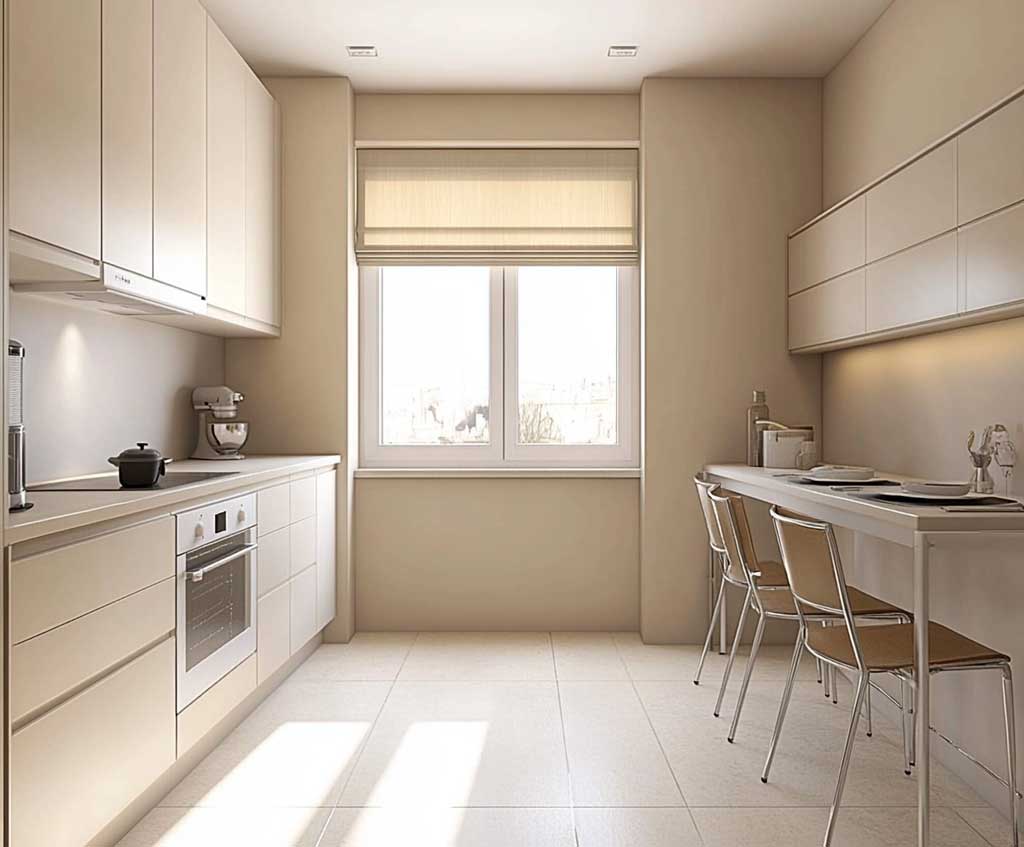
Minimalist kitchens rely on a lack of visual clutter, and neutral hues emphasize this calm, streamlined aesthetic. Smooth surfaces—such as countertops made from white quartz or light-toned marble—complement the sleek cabinetry that often lacks visible handles. These materials enhance the feeling of simplicity and refinement. Neutral-colored walls also serve as a clean backdrop, allowing other design elements, such as wooden cutting boards or stone planters, to stand out without overwhelming the space.
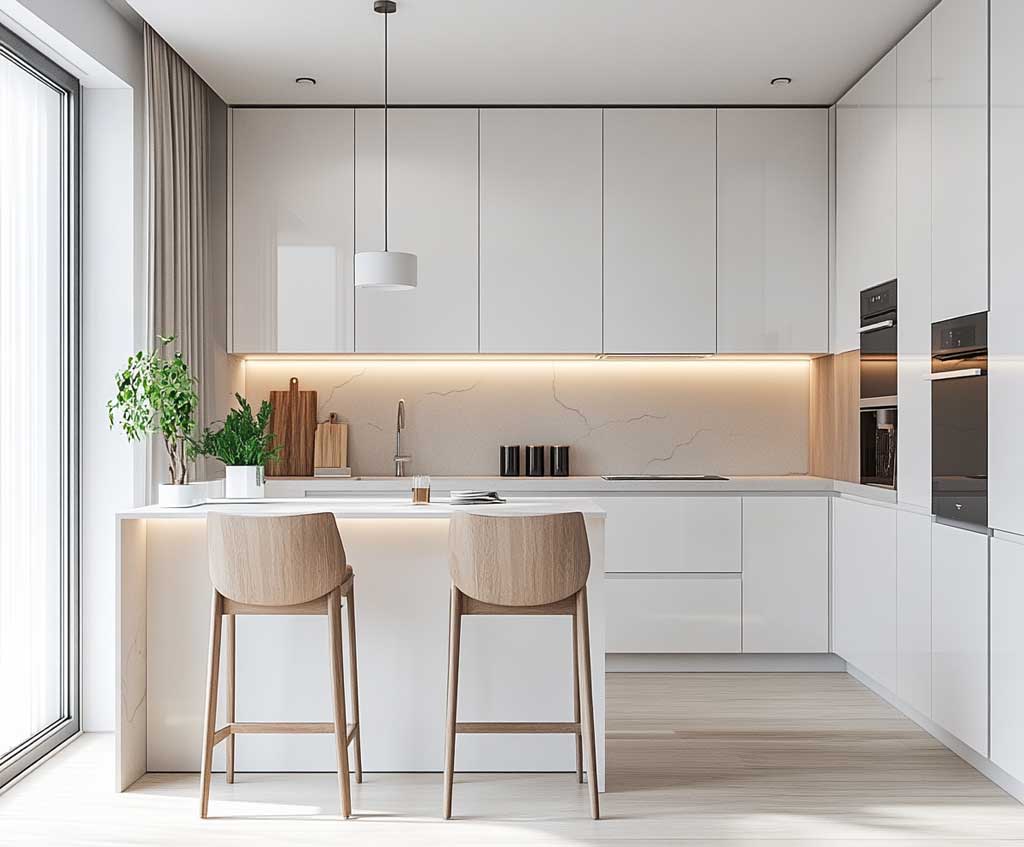
One advantage of a neutral palette in a small kitchen is the flexibility it offers in terms of personalization. Homeowners can introduce subtle textures or decorative elements without disturbing the overall theme. For instance, light oak flooring or a natural stone backsplash adds warmth to the cool tones, striking a perfect balance between minimalism and coziness.

Natural light plays a key role in enhancing neutral palettes. A strategically placed window or skylight can flood the kitchen with sunlight, making even compact spaces feel expansive. In the absence of natural light, warm under-cabinet lighting can be used to soften the atmosphere. These small touches make the environment inviting and functional, ensuring that the simplicity of the design does not translate to coldness.
Overall, a focus on neutral tones is a powerful tool in small simple kitchen design, creating a peaceful environment where functionality and style coexist. These kitchens invite homeowners to slow down, enjoy the cooking process, and take pleasure in a clutter-free lifestyle. By prioritizing serenity, they elevate a small kitchen from merely functional to a calming retreat in the heart of the home.
How small simple kitchen design maximizes space with smart layouts
A well-planned layout is essential when working with small spaces, especially in the kitchen. The key to an effective small kitchen design lies in maximizing the available area without compromising functionality or style. Smart layouts such as U-shaped or L-shaped configurations help optimize the kitchen’s footprint by using every inch efficiently. These designs ensure that everything needed for cooking is within easy reach, creating a seamless workflow from preparation to cleanup.

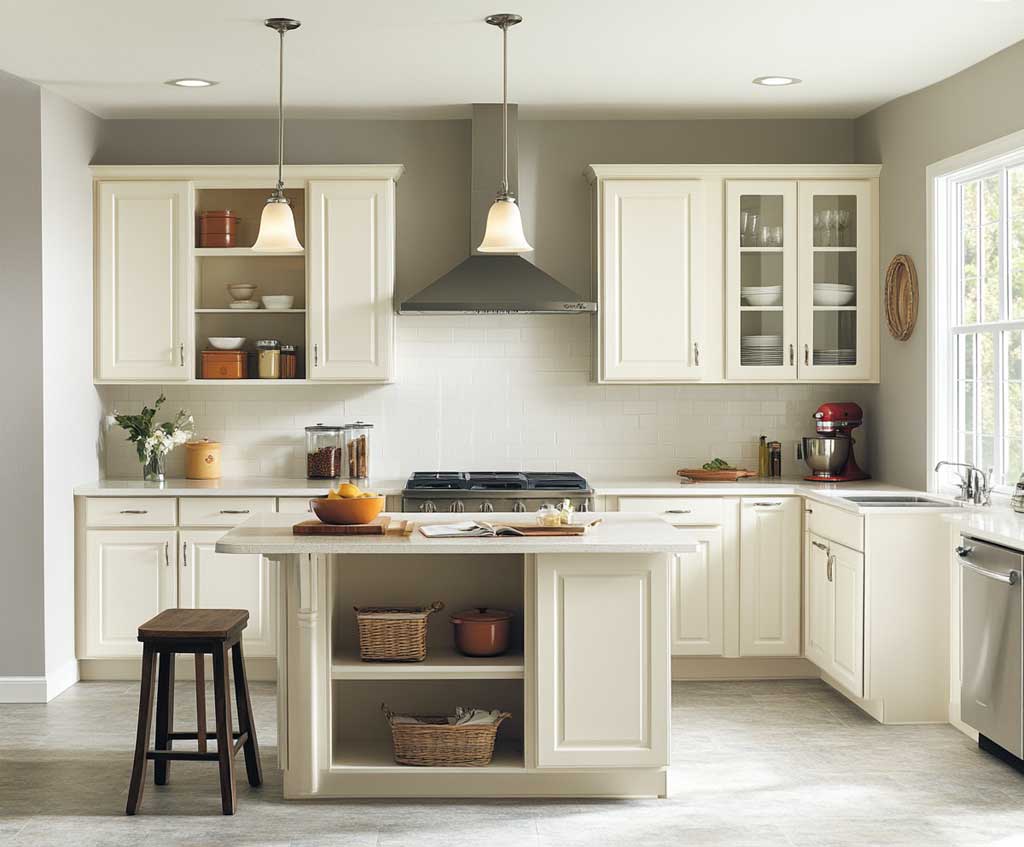
One of the main challenges in a small kitchen is finding enough storage. To solve this, cabinets often extend to the ceiling, utilizing vertical space that would otherwise go to waste. These upper cabinets can store less frequently used items, keeping the counters clear for everyday tasks. Open shelving is another practical option, offering easy access to essential items while maintaining an airy feel. In many minimalist kitchens, shelving is deliberately kept sparse to avoid visual clutter.
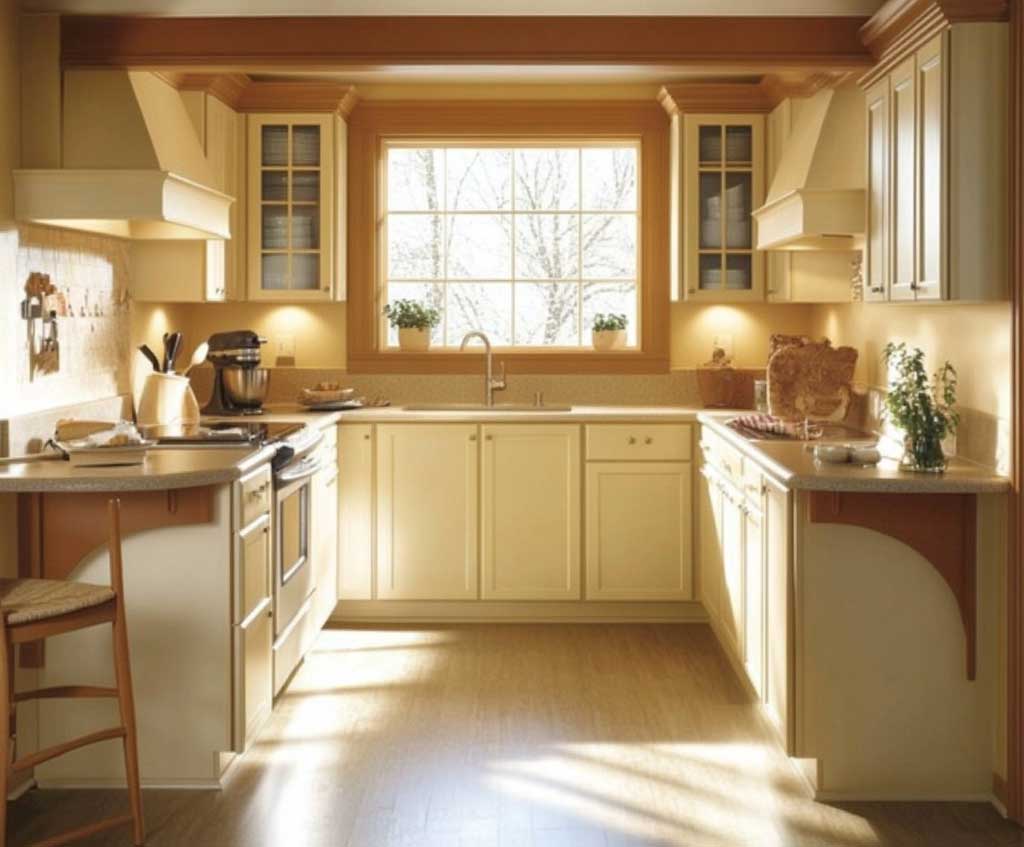
Compact layouts often incorporate multifunctional features. For example, a kitchen island can serve as both a prep area and a dining table. Some designs include foldable or pull-out countertops that expand the working space when needed but can be tucked away afterward to free up room. Built-in appliances, such as dishwashers and ovens, reduce the need for bulky standalone equipment, further enhancing the minimalist appeal.

Lighting plays a significant role in making small kitchens feel more spacious. Task lighting, such as under-cabinet lights, ensures that work areas are well-lit, while ambient lighting adds depth to the room. In open-concept homes, the kitchen layout can seamlessly integrate with adjacent spaces, allowing for better interaction and movement between rooms.
Small kitchen layouts also focus on creating flow. An open design encourages smooth transitions between cooking, eating, and socializing areas, even in limited spaces. When a compact kitchen connects to a living or dining area, the boundaries between rooms blur, making the entire home feel larger and more unified.
By prioritizing smart layouts, small kitchens can become both practical and inviting. Thoughtful arrangements ensure that every element serves a purpose, eliminating the need for unnecessary extras. With multifunctional features, built-in storage, and intentional flow, these compact kitchens embody the essence of simplicity and efficiency—making even the tiniest spaces feel comfortable and complete.
How small simple kitchen design integrates natural elements effortlessly
Natural elements bring warmth and life to kitchens, and this is especially important in small spaces where the goal is to avoid a sterile or cramped atmosphere. Integrating wood, stone, and greenery into a compact kitchen fosters a connection to nature while maintaining the simplicity central to minimalism. Thoughtful use of organic materials can transform even the smallest kitchens into spaces that feel grounded and inviting.
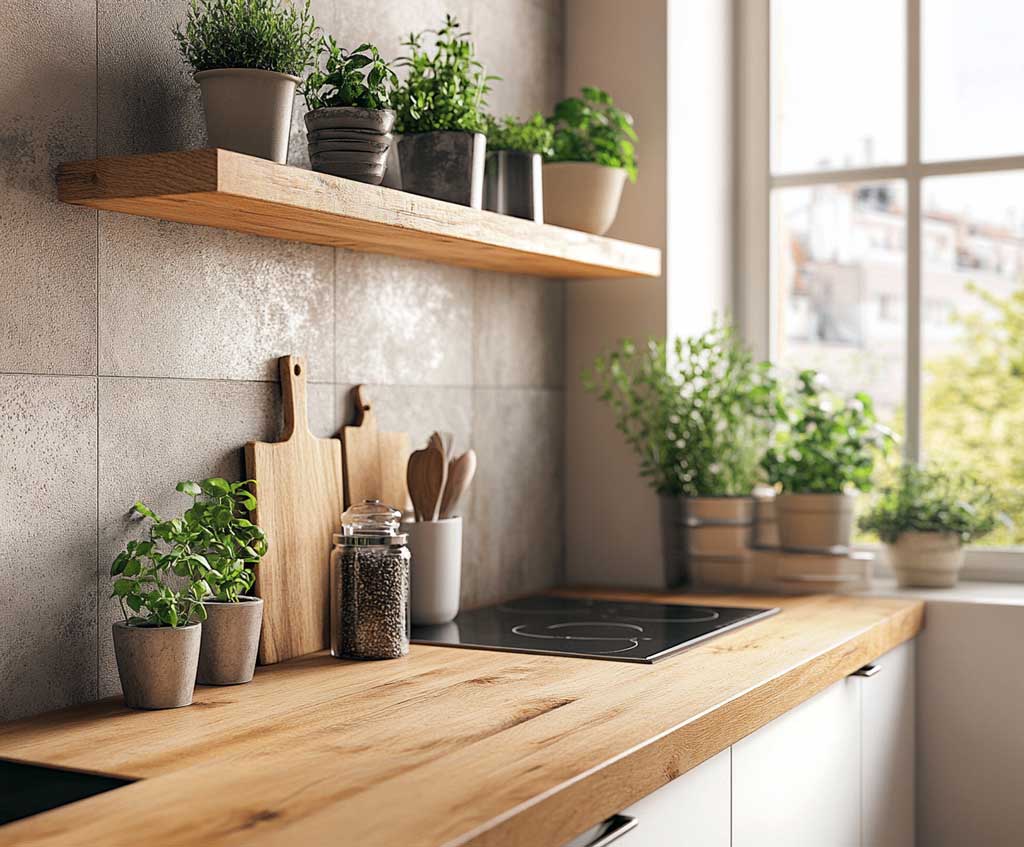

Wooden elements, such as countertops, open shelves, or cabinet fronts, add warmth and texture to minimalist kitchens. Lighter woods like oak or ash blend seamlessly with neutral palettes, enhancing the sense of calm and openness. In some designs, wooden stools or cutting boards placed strategically also act as subtle decor. These natural touches prevent the space from feeling too cold or mechanical, adding personality without compromising the clean aesthetic.
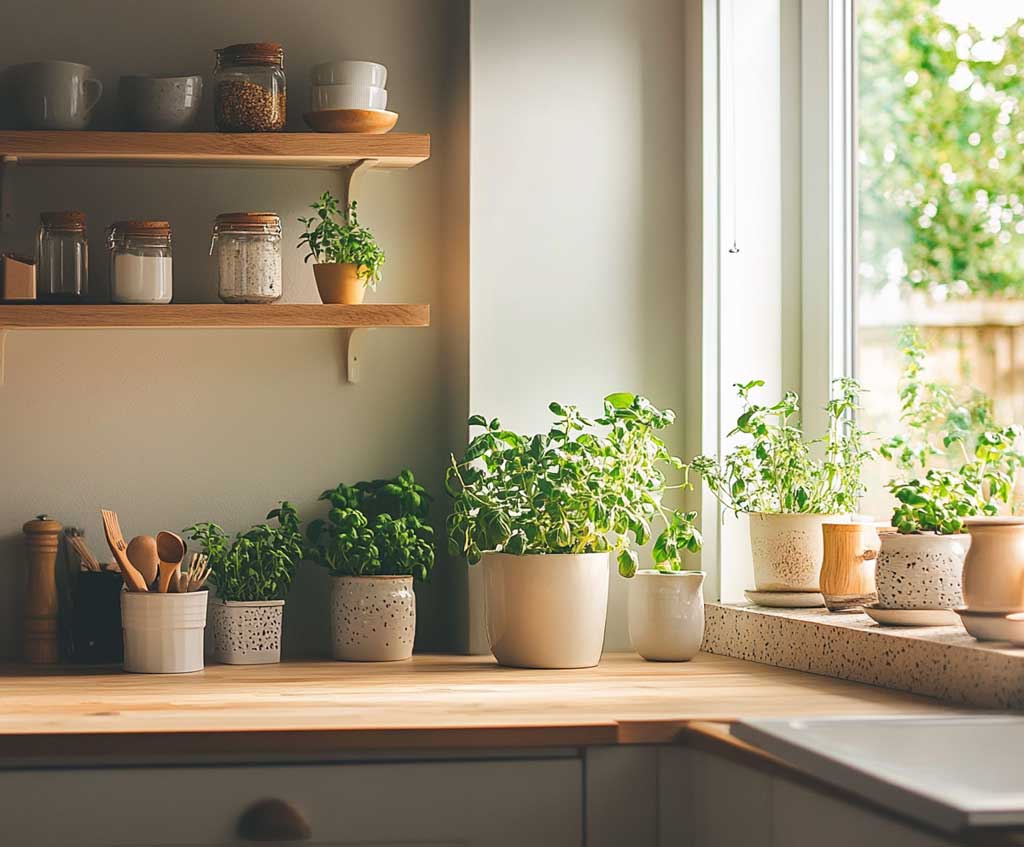
Stone is another material often used in small kitchens to introduce a sense of permanence and sophistication. A marble or granite backsplash, for example, offers subtle patterns that break up the monotony of plain walls. Stone countertops are both practical and visually appealing, combining durability with understated beauty. These materials fit effortlessly within minimalist kitchens, where every element is chosen for both function and form.
Plants provide the finishing touch to a nature-inspired kitchen design. Small potted herbs, such as basil or mint, placed on a windowsill add a splash of green and contribute to the functionality of the space. They not only enhance the design but also offer practical benefits by being easily accessible for cooking. Hanging plants or small planters mounted on walls are excellent alternatives for kitchens with limited counter space.

Natural lighting amplifies the beauty of organic materials. Large windows or skylights allow sunlight to enhance the colors and textures of wood, stone, and plants. This light also creates an ever-changing atmosphere throughout the day, making the kitchen feel alive and dynamic.
The harmonious integration of natural elements into a small, minimalist kitchen reflects a thoughtful approach to design. These spaces become more than just places to cook—they are environments that promote well-being, sustainability, and mindfulness. Natural materials, when combined with simplicity, create kitchens that are both beautiful and functional, reinforcing the idea that less truly can be more.
Embracing a minimalist approach through simple and compact design choices offers a way to create a balanced, clutter-free space that fosters efficiency and serenity. With small kitchen design, every detail matters, from smart layouts to natural lighting and efficient storage. The result is a room that not only saves space but also enriches daily life with a touch of elegance and simplicity. When executed well, these kitchens become more than just functional areas—they are an invitation to a calmer, more intentional lifestyle.




